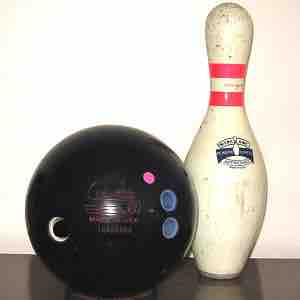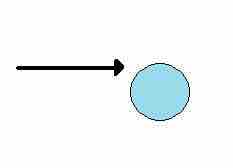During a collision of objects in a closed system, momentum is always conserved. This fact is readily seen in linear motion. When an object of mass m and velocity v collides with another object of mass m2 and velocity v2, the net momentum after the collision, mv1f + mv2f, is the same as the momentum before the collision, mv1i + mv2i.
What if an rotational component of motion is introduced? Is momentum still conserved ?

Bowling ball and pi
When a bowling ball collides with a pin, linear and angular momentum is conserved
Yes. For objects with a rotational component, there exists angular momentum. Angular momentum is defined, mathematically, as L=Iω, or L=rxp. This equation is an analog to the definition of linear momentum as p=mv. Units for linear momentum are kg⋅m/s while units for angular momentum are kg⋅m2/s. As we would expect, an object that has a large moment of inertia I, such as Earth, has a very large angular momentum. An object that has a large angular velocity ω, such as a centrifuge, also has a rather large angular momentum.
So rotating objects that collide in a closed system conserve not only linear momentum p in all directions, but also angular momentum L in all directions.
For example, take the case of an archer who decides to shoot an arrow of mass m1 at a stationary cylinder of mass m2 and radius r, lying on its side. If the archer releases the arrow with a velocity v1i and the arrow hits the cylinder at its radial edge, what's the final momentum ?

Arrow hitting cyclinde
The arrow hits the edge of the cylinder causing it to roll.
Initially, the cylinder is stationary, so it has no momentum linearly or radially. Once the arrow is released, it has a linear momentum p=mv1i and an angular component relative to the cylinders rotating axis, L=rp=rm1v1i. After the collision, the arrow sticks to the rolling cylinder and the system has a net angular momentum equal to the original angular momentum of the arrow before the collision.